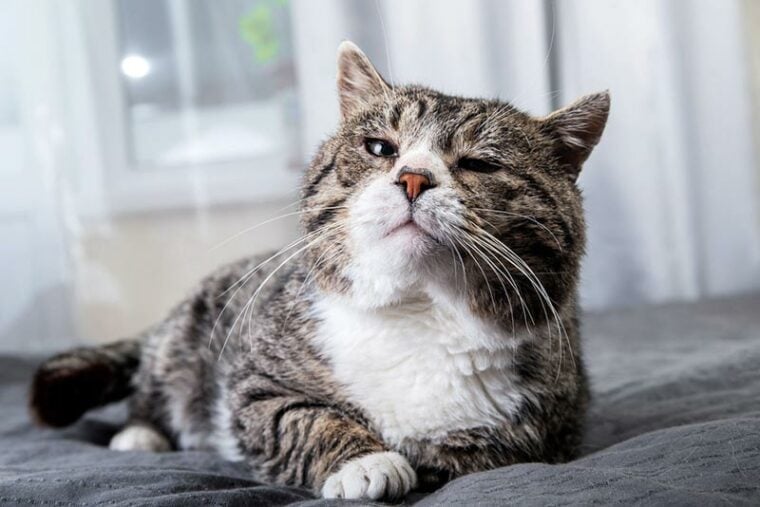
Click to Skip Ahead
One of the most harrowing moments in any young person’s life is when they realize that their hair is starting to turn grey. It is a universal sign of aging in the human race. Some people embrace it as a natural part of life, while others try to hide the evidence in a bid to delay the inevitable march towards advanced age.
But what about cats? Do cats go grey as they age? Cats usually manage to look great thanks to their fastidious grooming routines, so are they able to beat aging? Not exactly. Cats do turn grey as they age, eventually. But it is not the same as the way your hair goes grey.
Do Cats Go Grey With Old Age?
Yes. Cats will go grey as they age. That makes cats similar to dogs and humans. Despite the similarities, cats do grey differently than other animals. Cats go grey more slowly and more subtly than other animals that lose pigmentation from their hair, coats, fur, or skin. It can be difficult to tell how old a cat is just by looking at it because they do not go grey as much as other animals. People are used to using grey hair to gauge the age of each other and their dogs, but they will struggle to replicate that behavior with their cats.

When Do Cats Go Grey?
Cats only go grey extremely late in life. Unlike dogs and humans, cats rarely turn grey prematurely. Of course, there are always exceptions. However, most cats will not start showing signs of greying until they are over 15 years old. Some cats don’t start greying until they are approaching 20 years old. That puts the window for turning grey firmly at the end of a cat’s typical lifespan. By comparison, dogs and humans can start greying around the halfway point of their lifespan.
Why Do Cats Go Grey?
Cats turn grey for the same reason that people do; they start losing pigmentation from their fur. As animals age, the number of cells responsible for pigmentation of their hair, known as melanocytes, start to decline, and hair still grows but without pigment.

Where Do Cats Go Grey?
Cats typically go grey around their faces first. Cats will not usually turn grey all over their body. A white cat will not turn into a grey cat, and neither will a tabby cat. You can see the greying start to show up around the paws, feet, whiskers, and eyes of an older cat. Sometimes, you can see some greying appear in the tail as well. Grey fur will rarely appear on the body of the cat.
Greying in Cats vs. Dogs
Both cats and dogs grey, but cats grey much slower than dogs. Some dogs can start going grey long before they reach geriatric status. Dogs will show grey fur on their face and on their muzzles first. By comparison, cats grey much later than dogs, and they also grey in much more subtle ways. Often, it is hard to tell how old a cat is at first glance because a gray coat doesn’t give it away. However, there are a number of signs that cats are aging, such as reduction in muscle mass, a graying of the lenses (a normal finding in older cats called nuclear sclerosis) and an increase in time spent sleeping.

Why Cats Grey Slower Than Dogs (And Humans)
The leading theory as to why cats go grey slower and later than both dogs and humans has to do with the number of melanocytes in their hair follicles. According to the BBC, melanocytes are “cells in the hair follicles responsible for the production of the pigment melanin,” which gives an animal’s coat its color. It is suggested that cats are born with more melanocytes than dogs or people, or that these cells degrade at a slower rate in cats. That means we run out of the cells that are responsible for our hair color much sooner than cats do. If your melanocytes do not run out, you will retain your hair color for much longer.
The exact mechanism that causes cats to grey much more slowly than other animals is still under consideration and up for debate. It is not entirely understood why cats manage to retain their color longer than dogs and humans, but they do.
Conclusion
Cats do go grey with old age, but they don’t start turning grey until they are very, very old. Some cats won’t start showing grey until they are nearly 20 years old. Cats also turn grey more subtly than other animals, making it hard to tell if they are actually going grey at all. This can make it difficult to tell a cat’s age simply by looking at their coat, but if you look closely at older cats, you can see signs of grey fur starting to come through.
Featured Image Credit: Alex Zotov, Shutterstock







